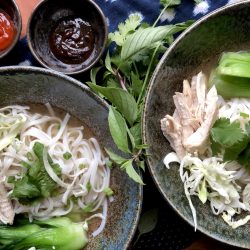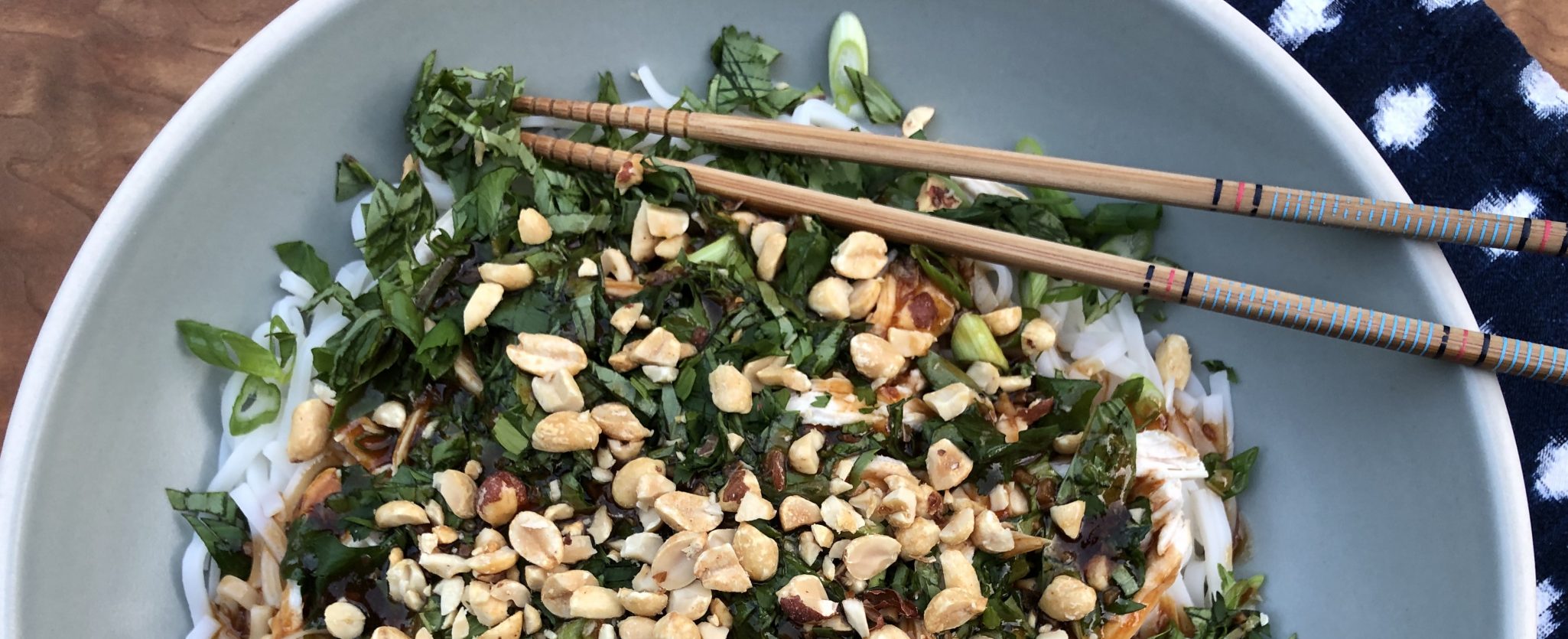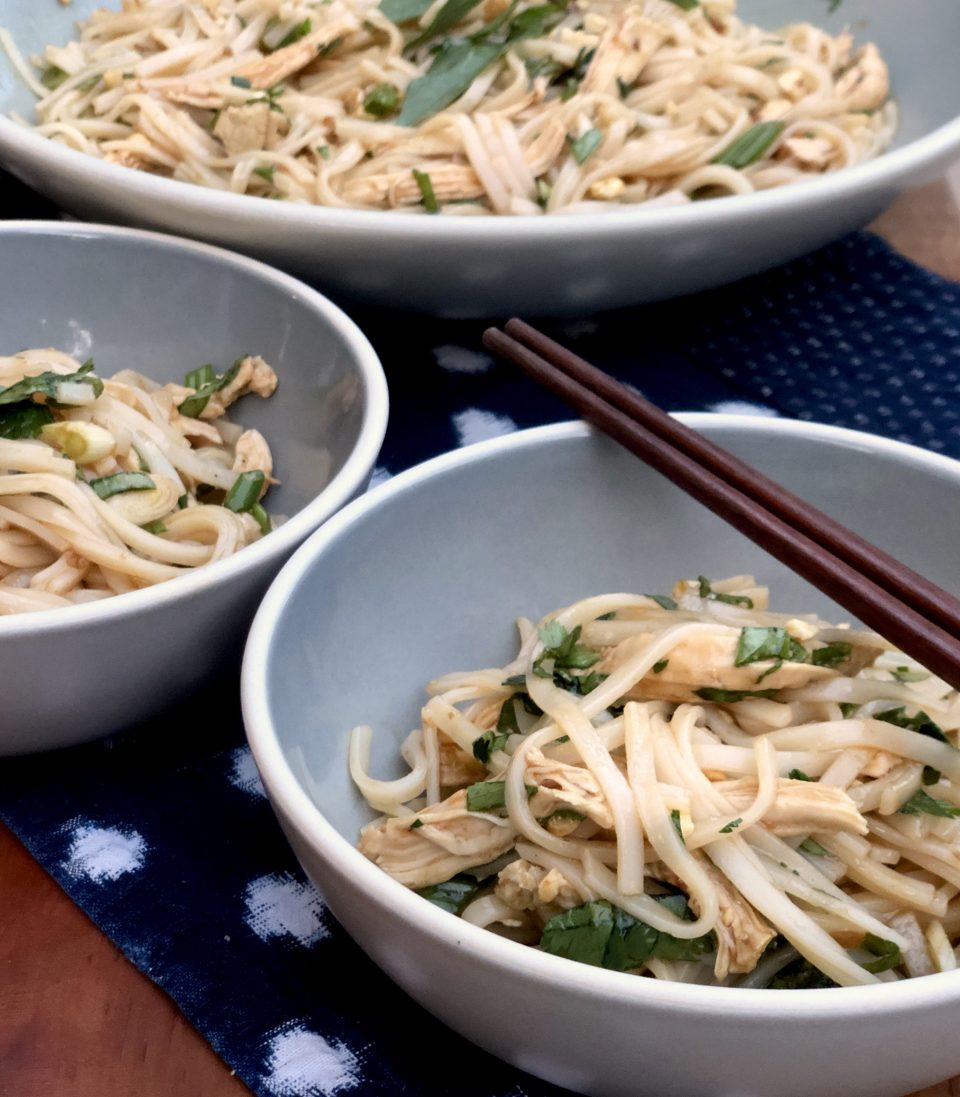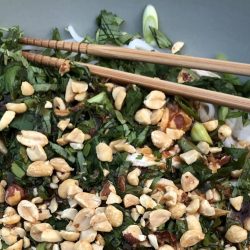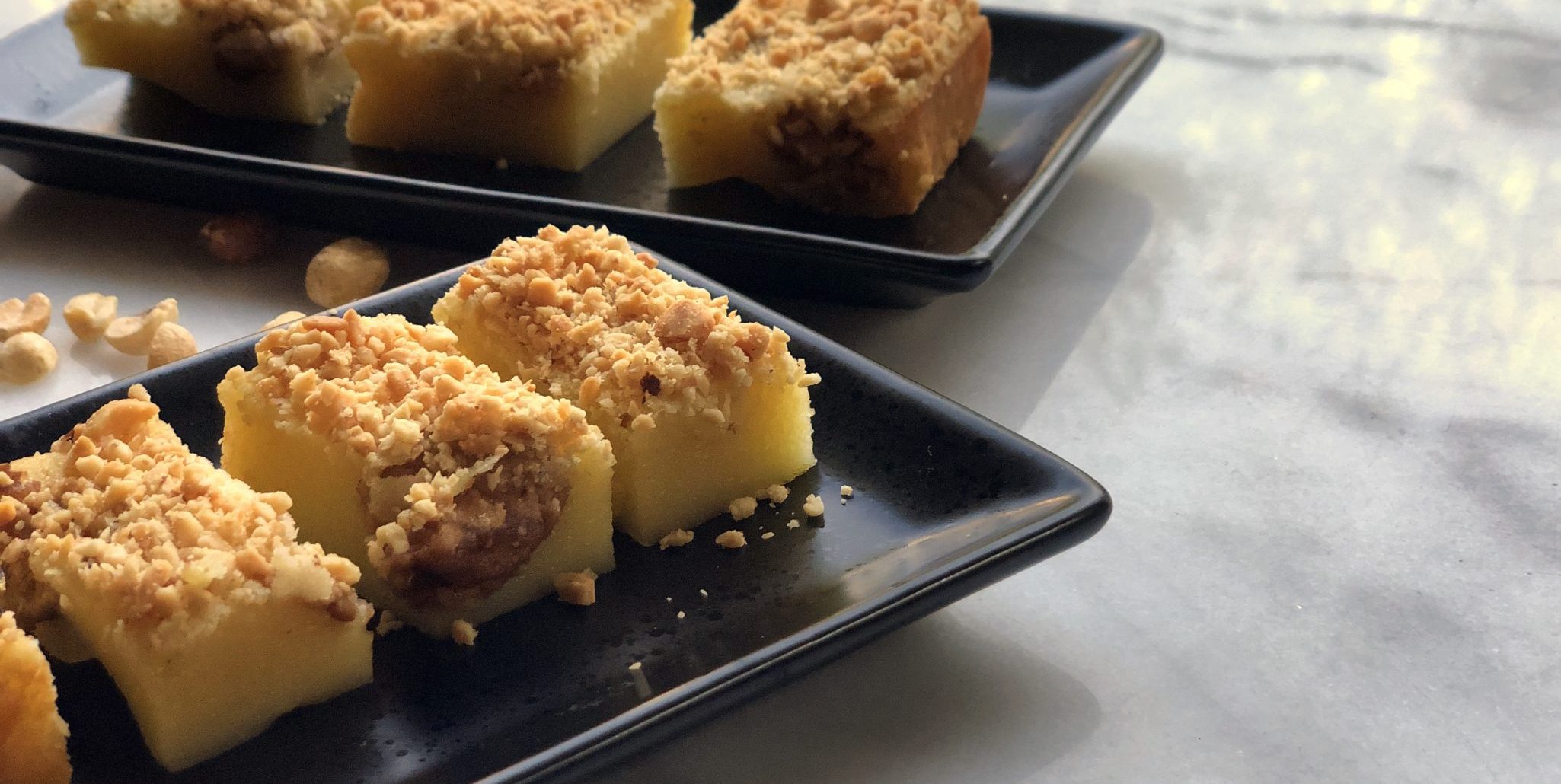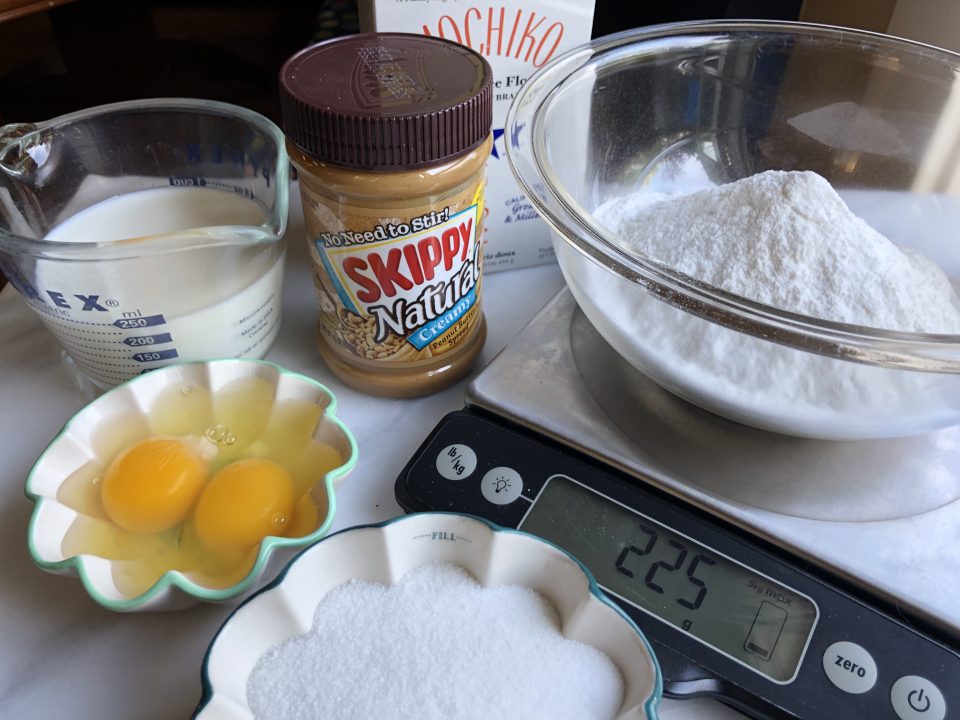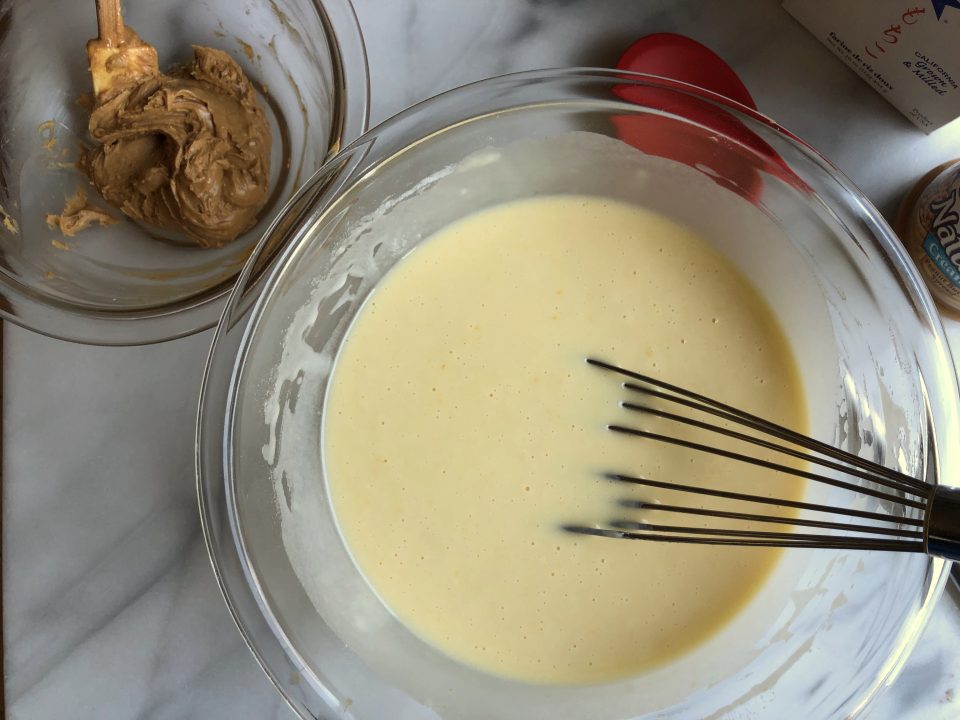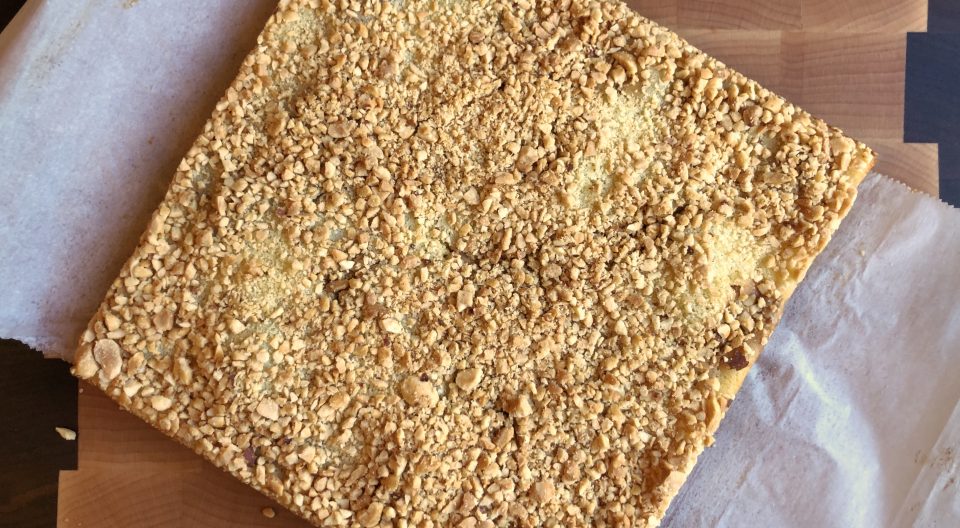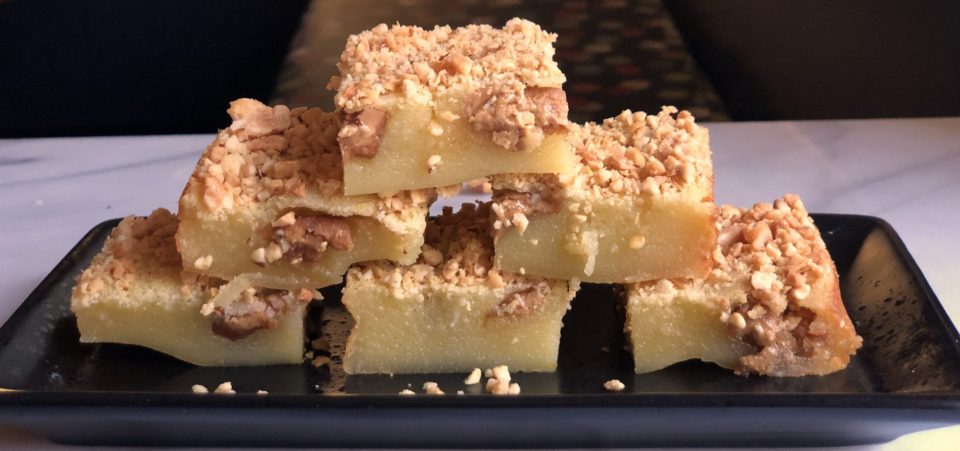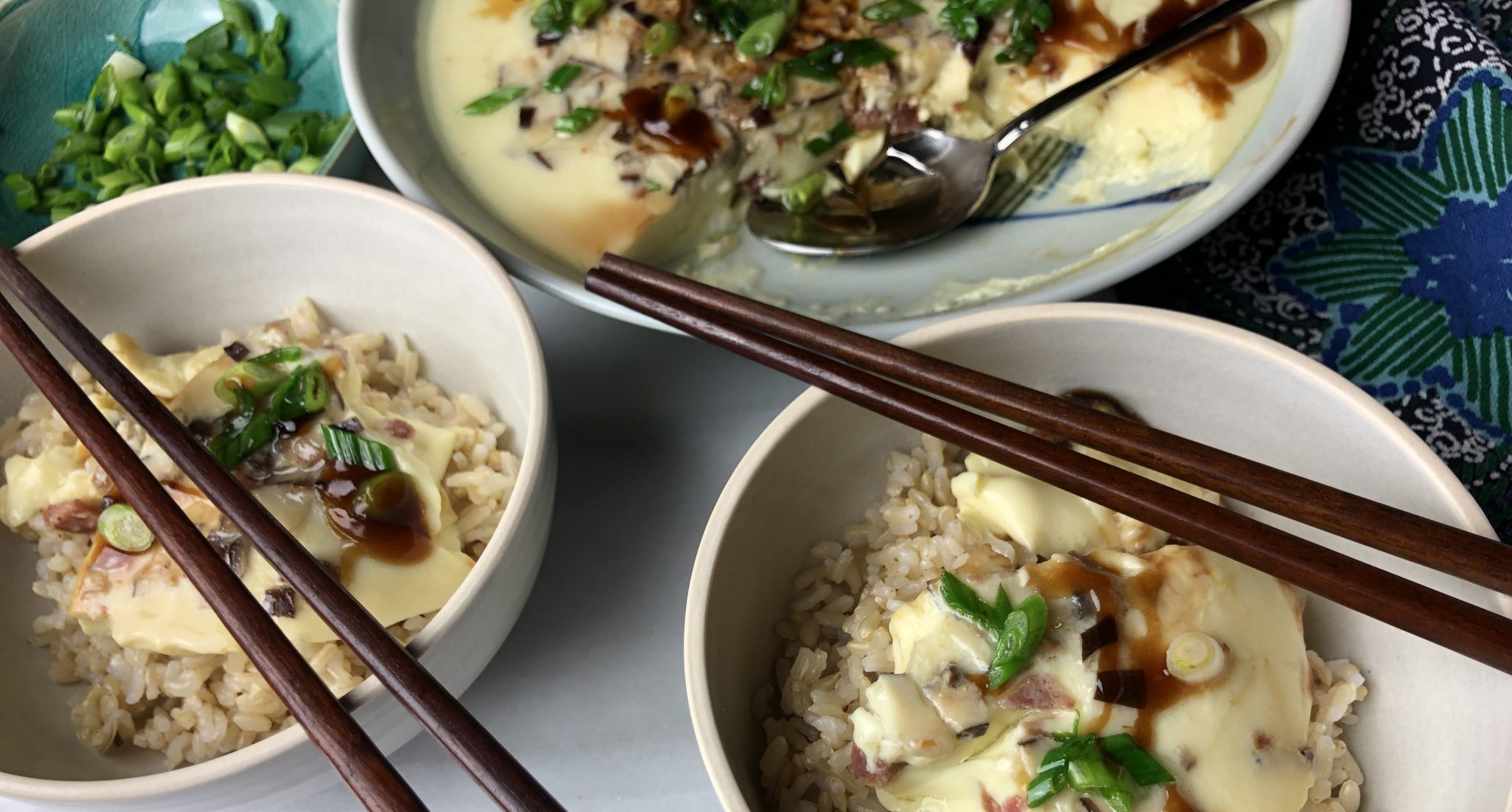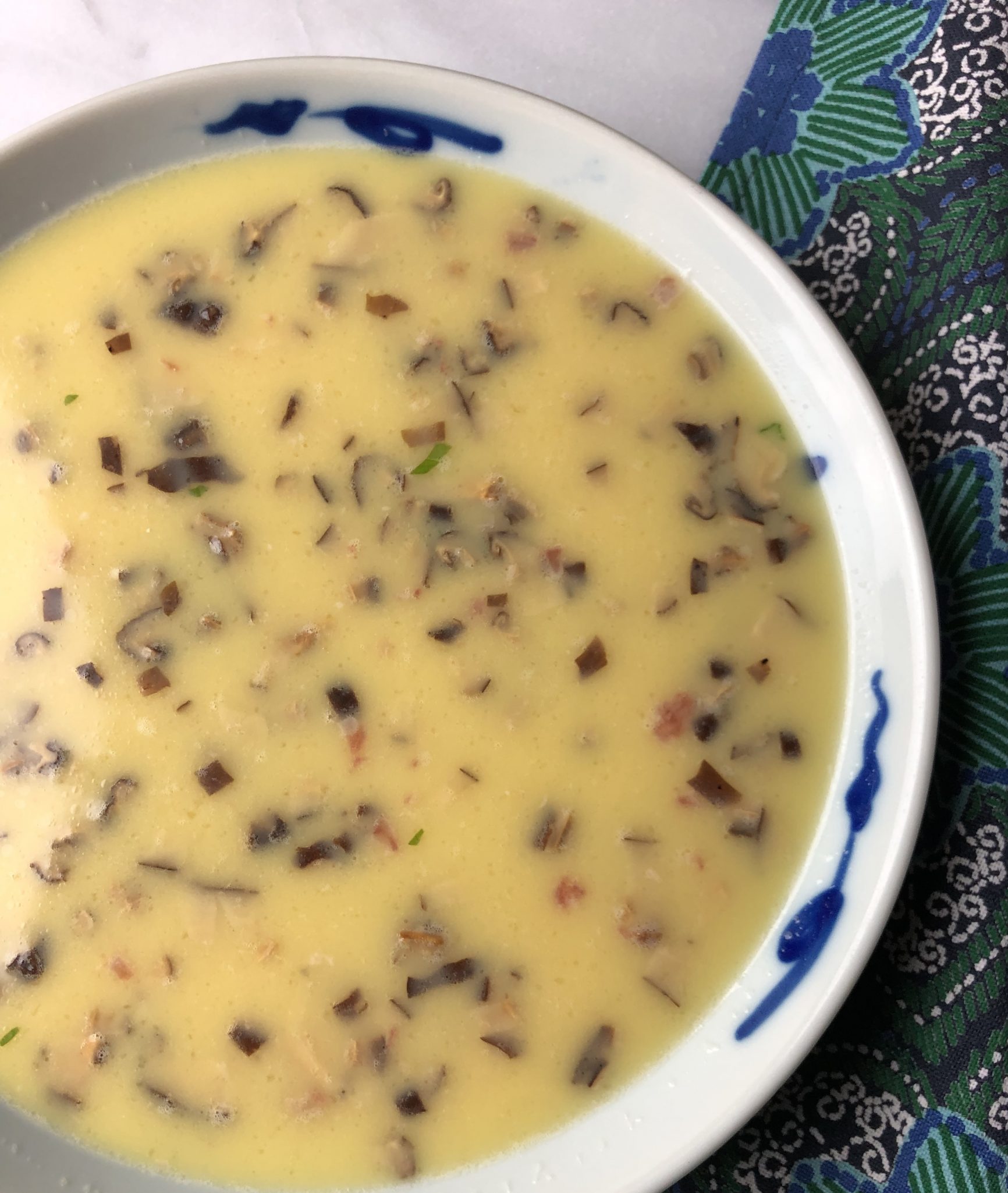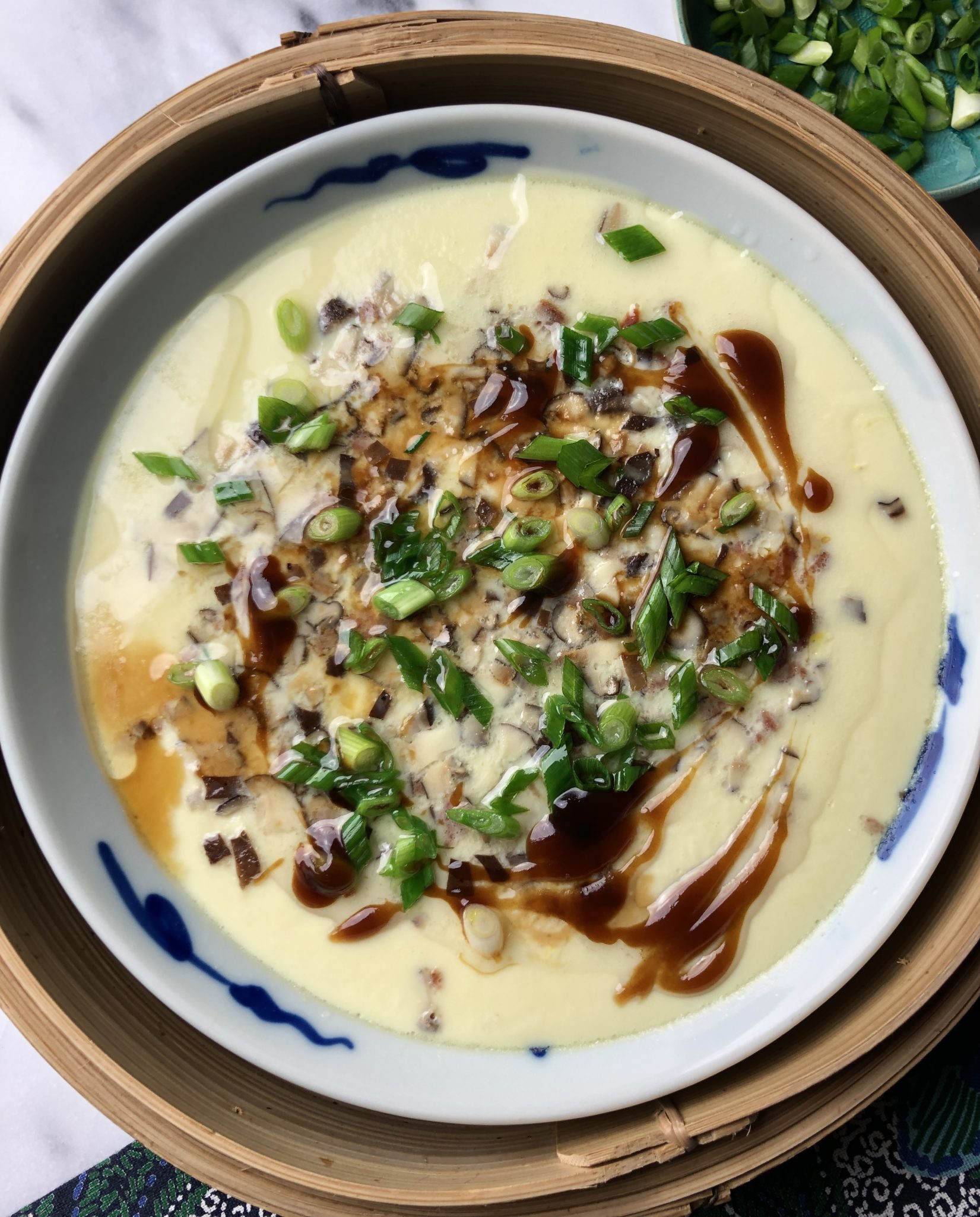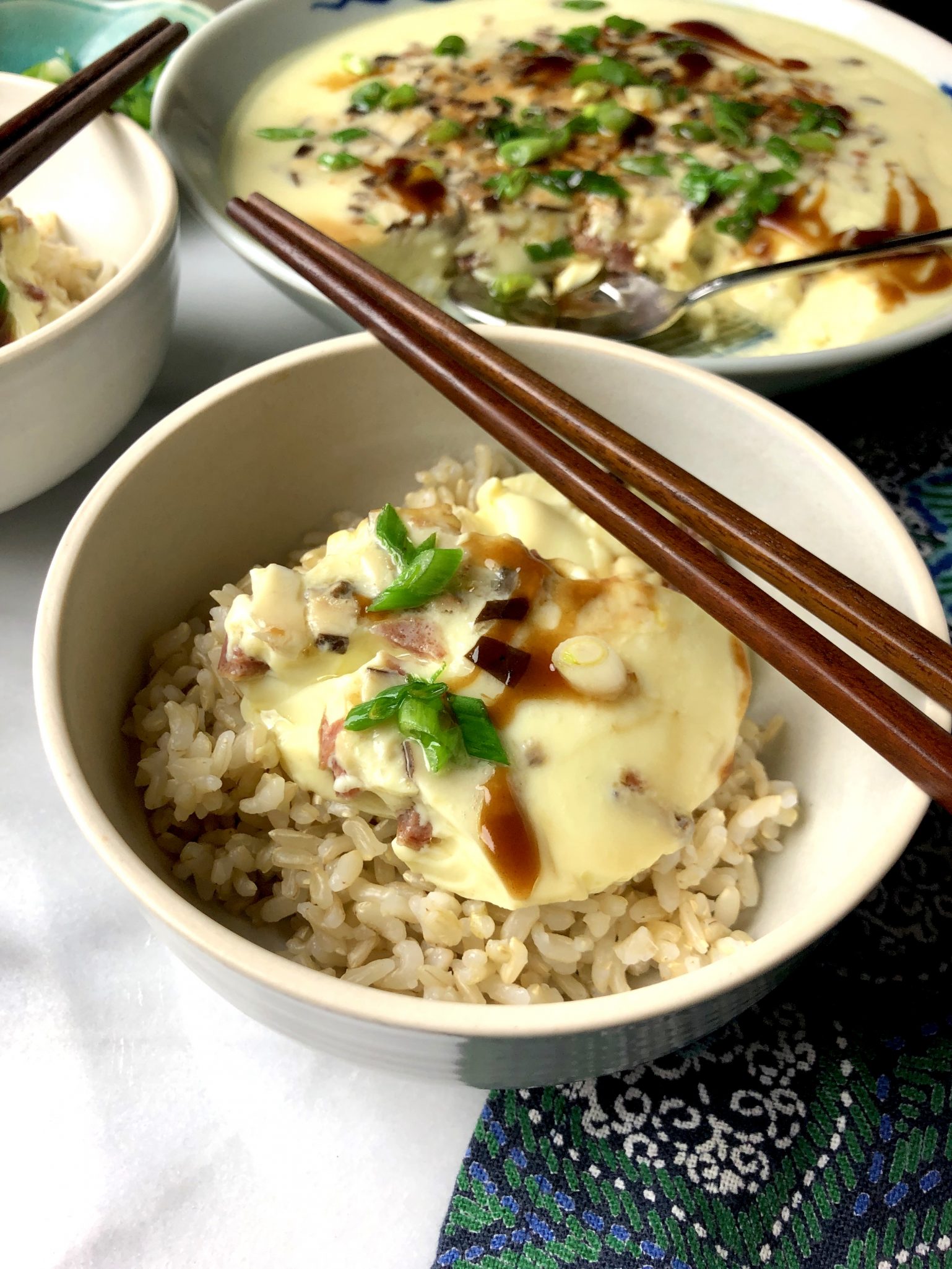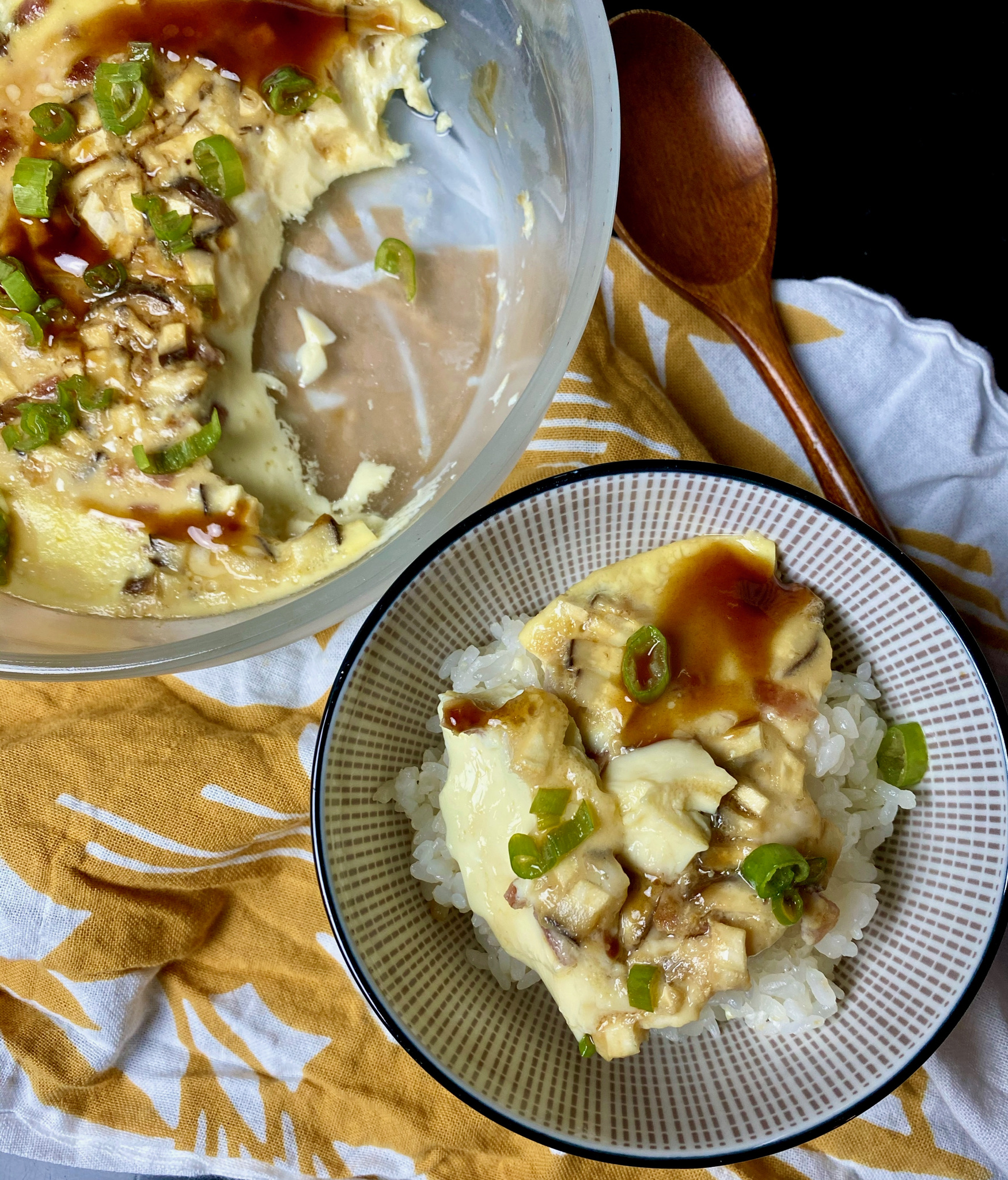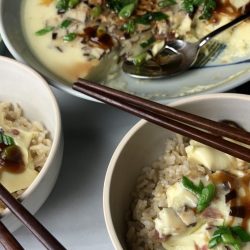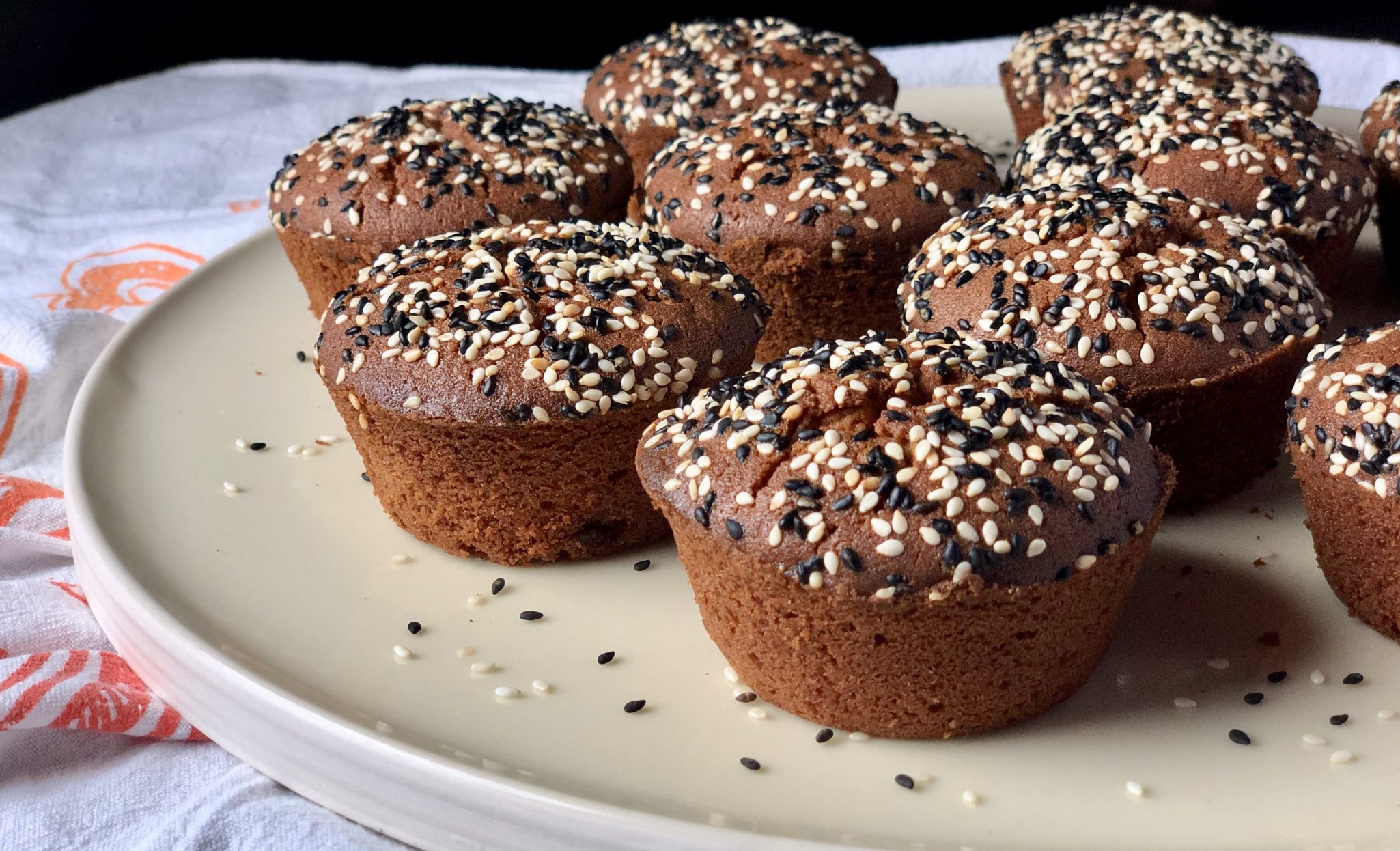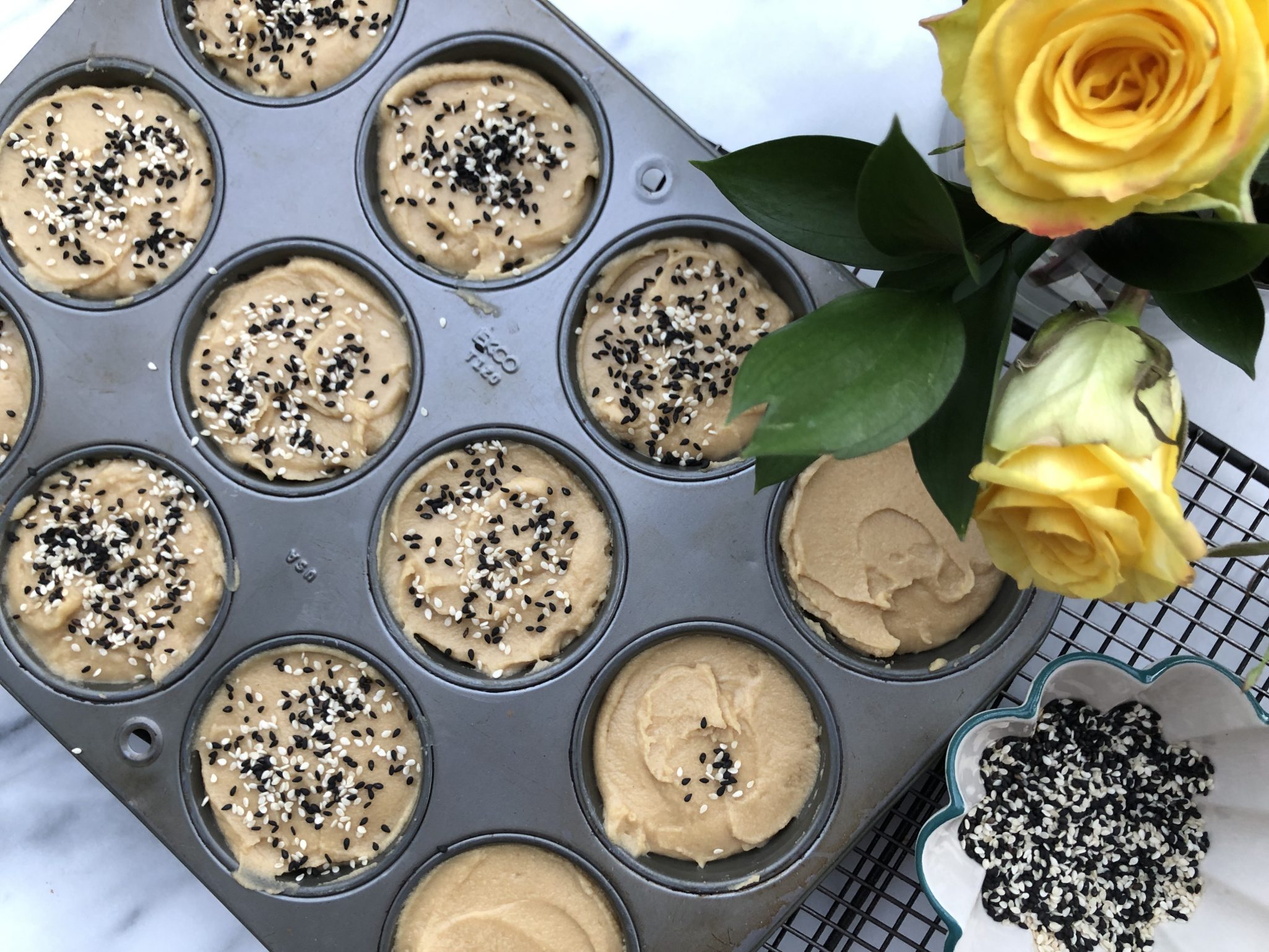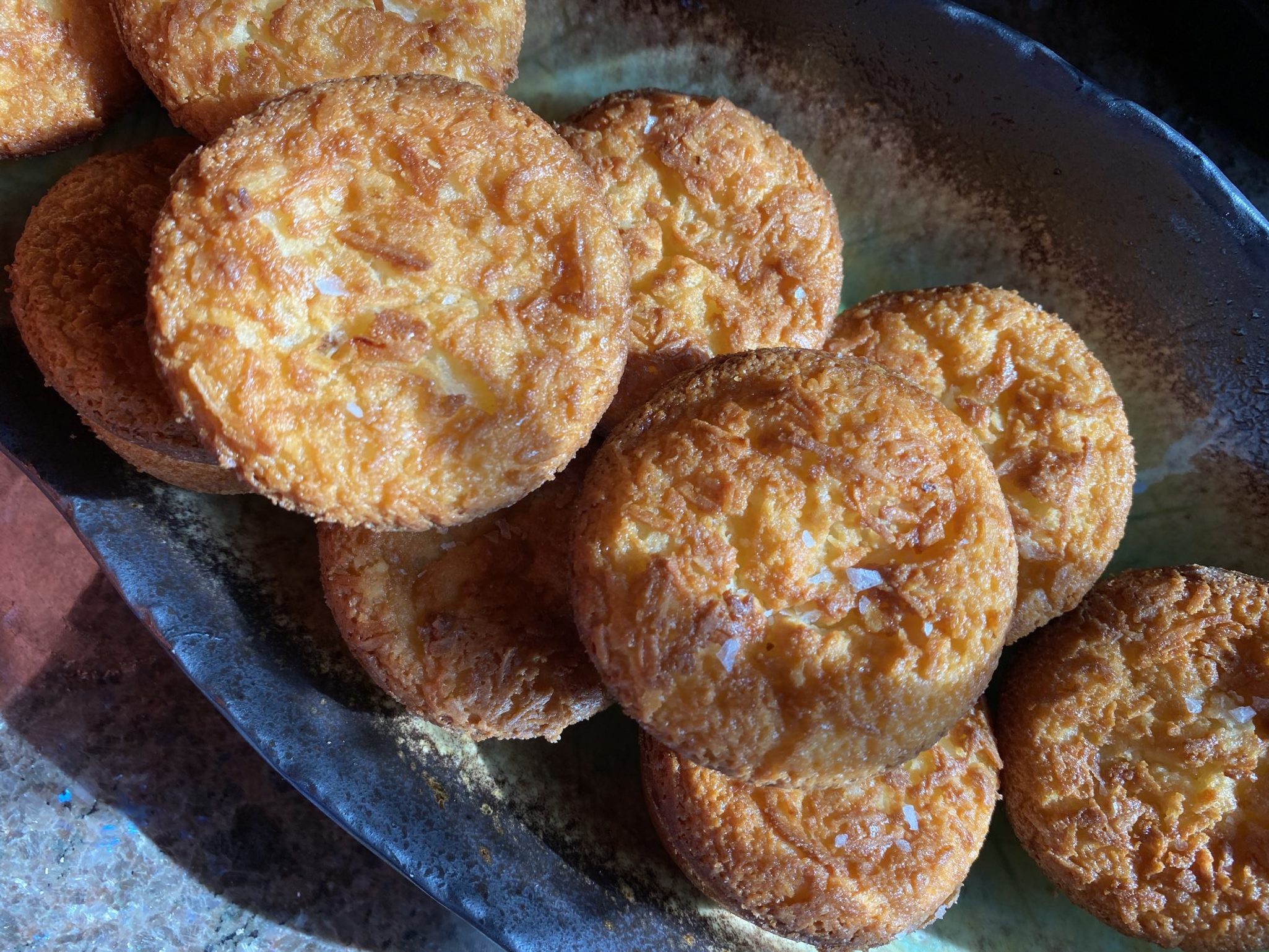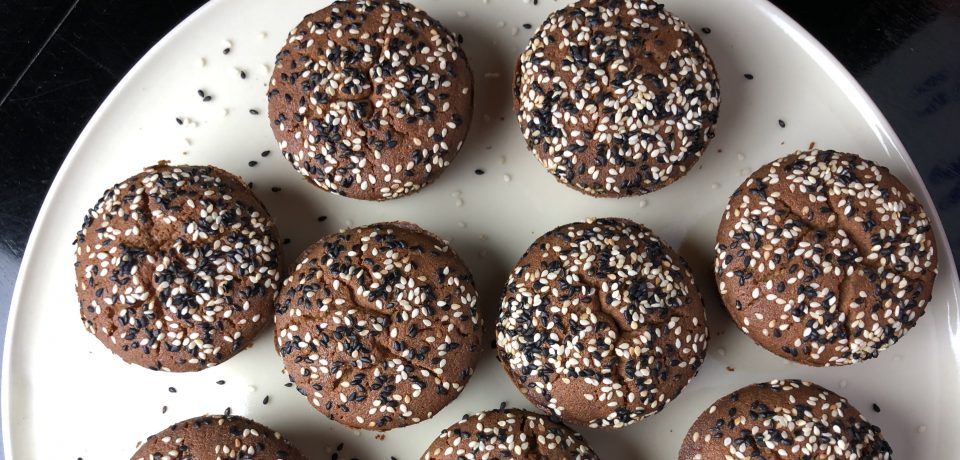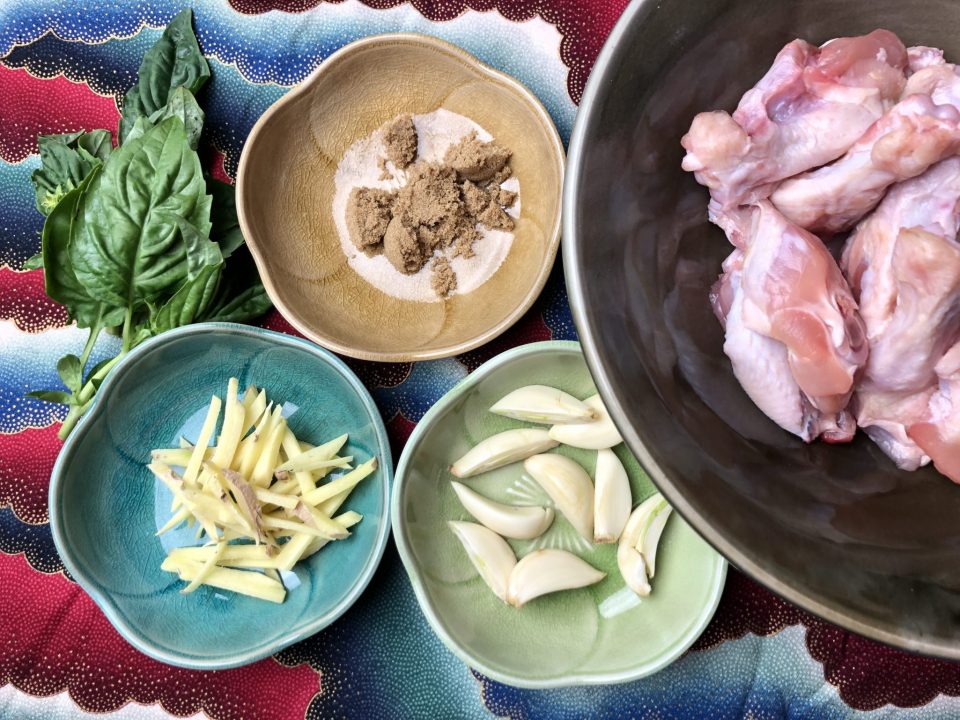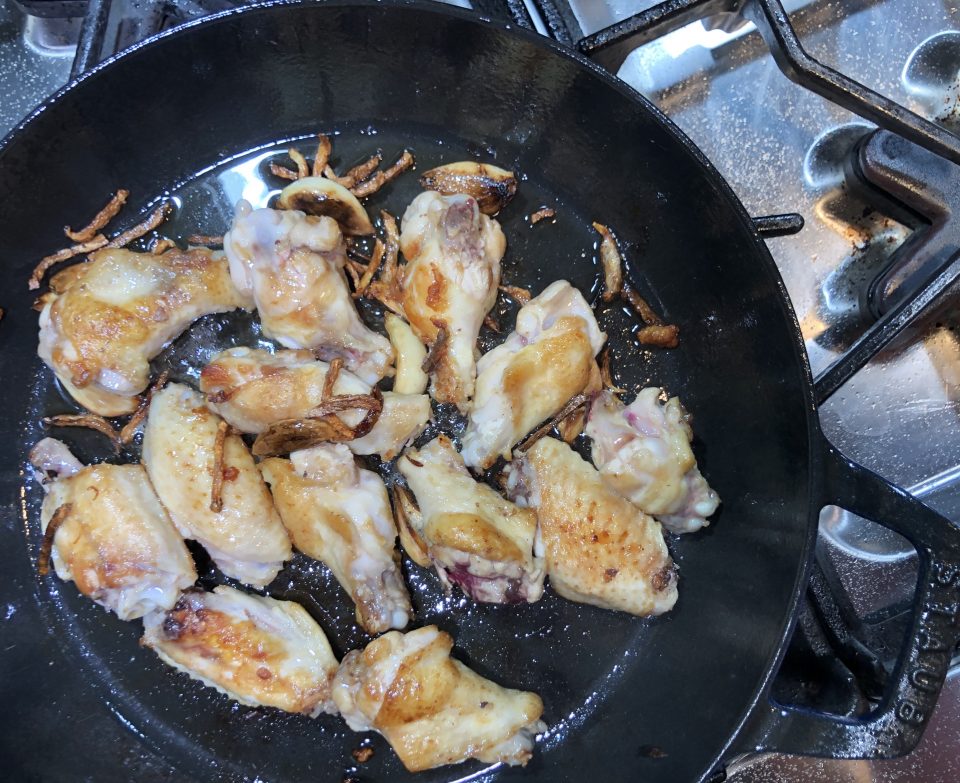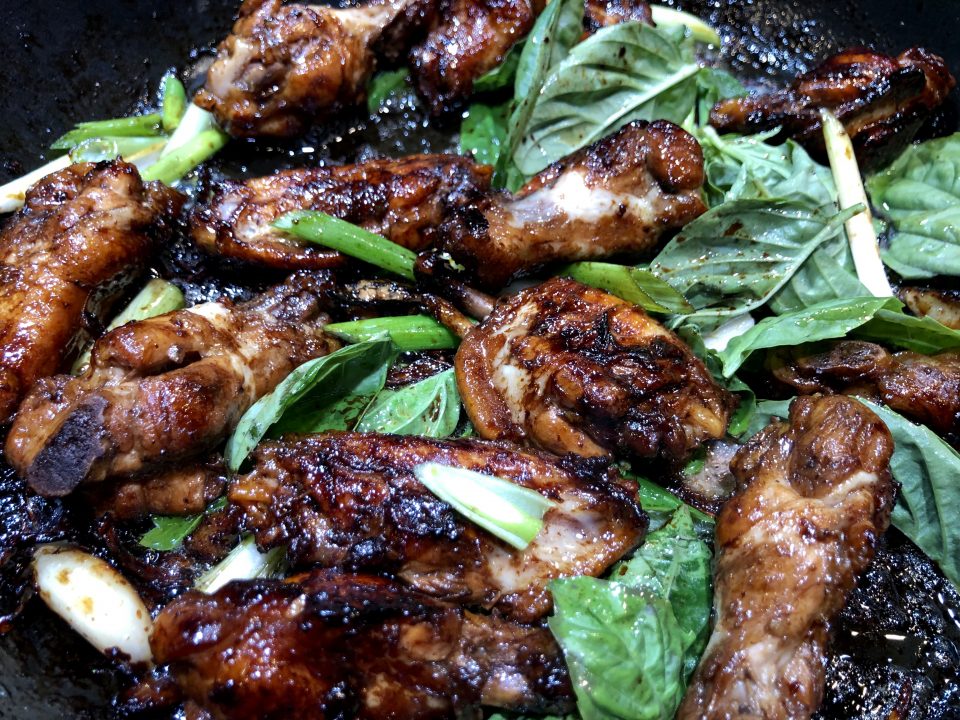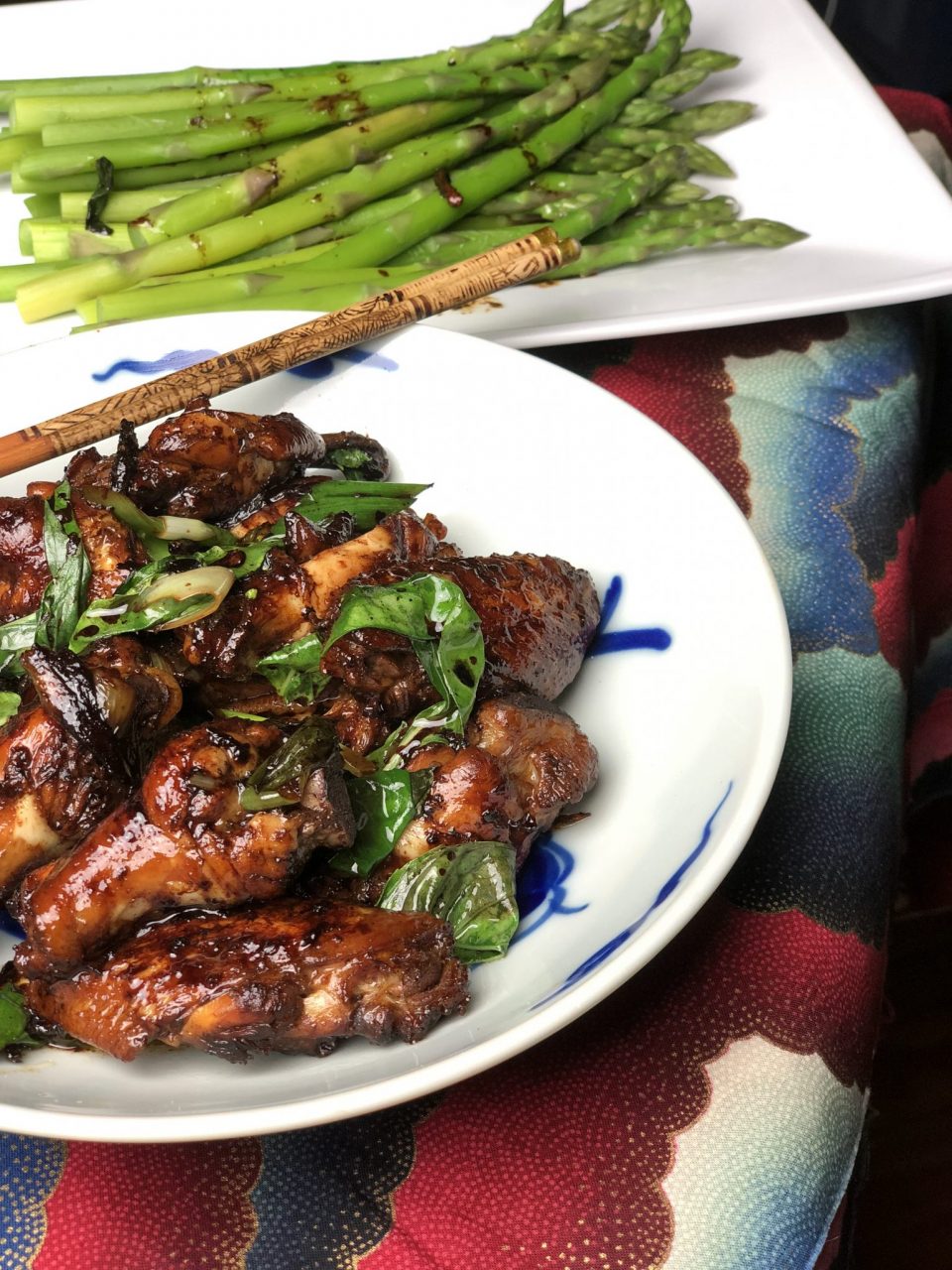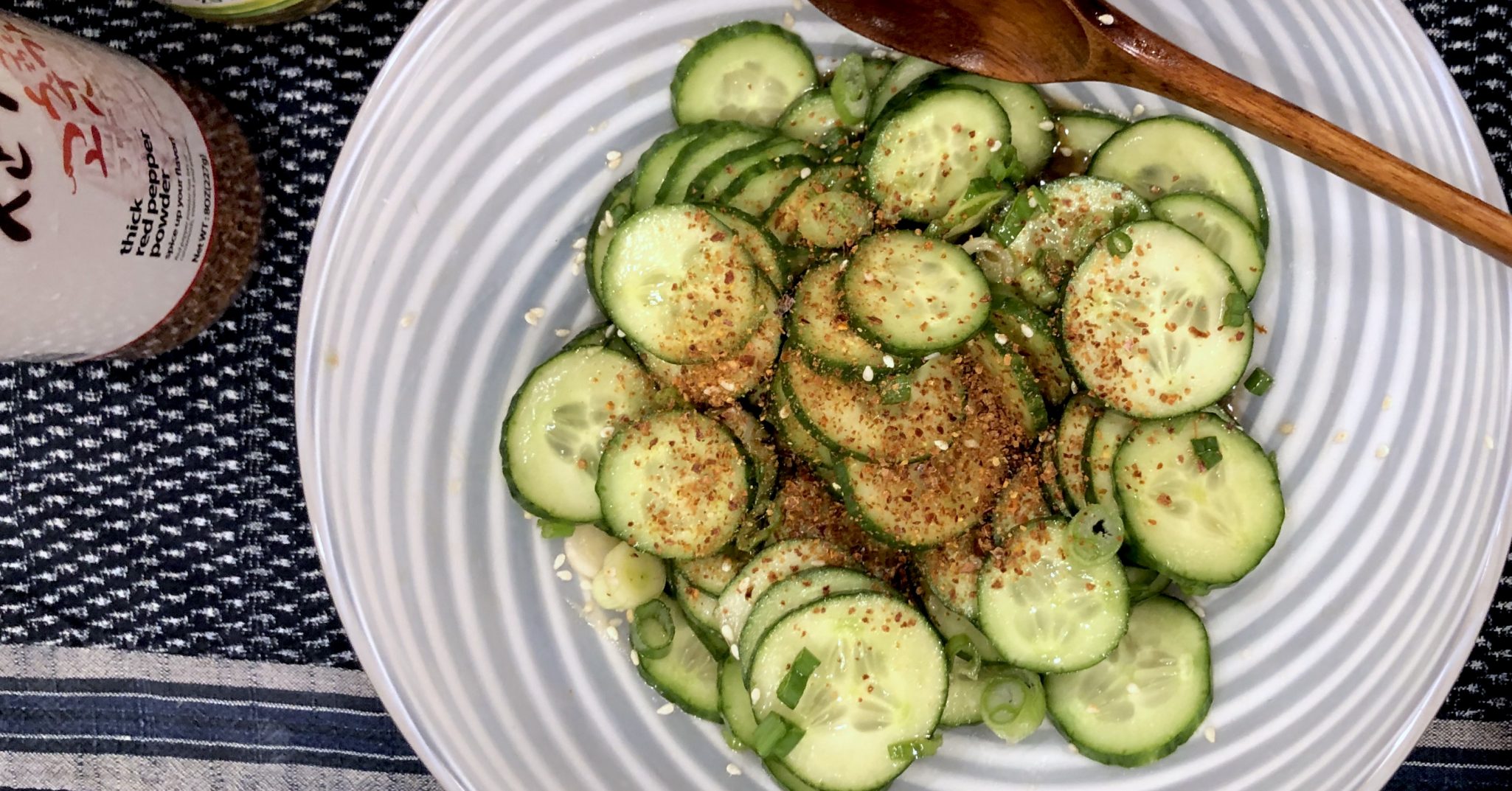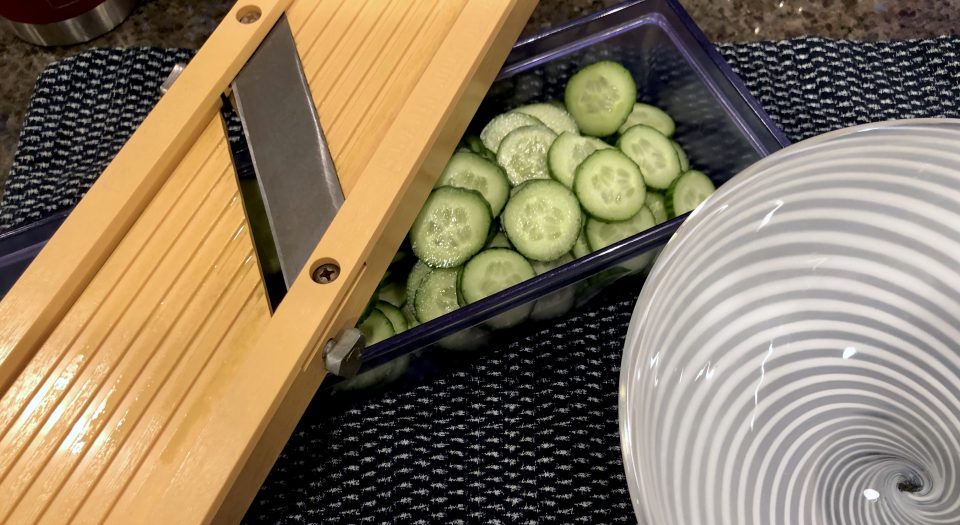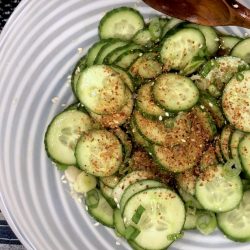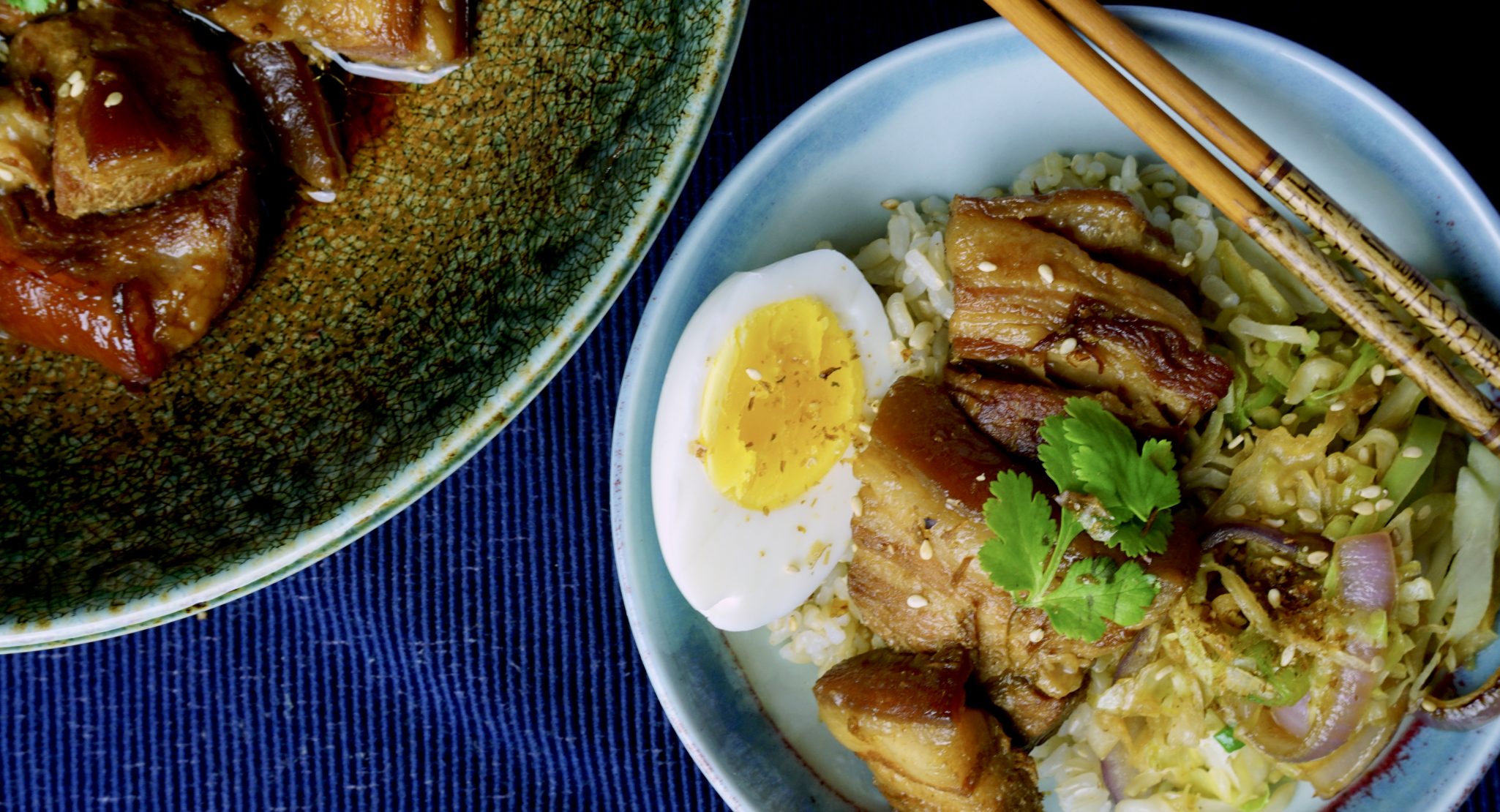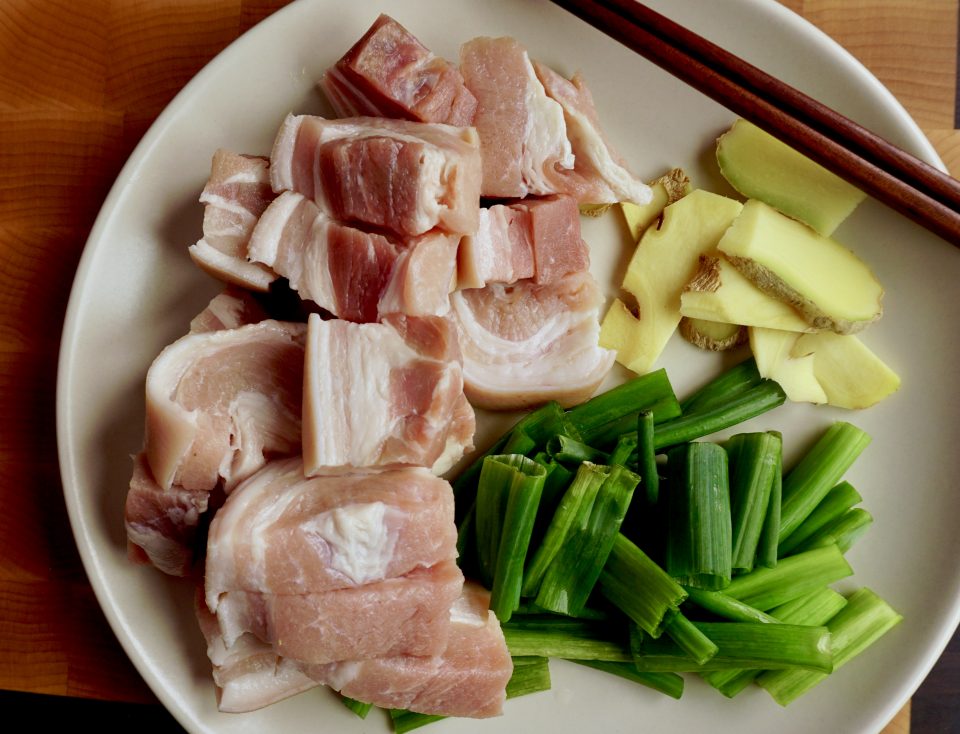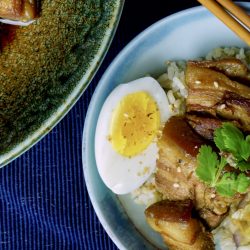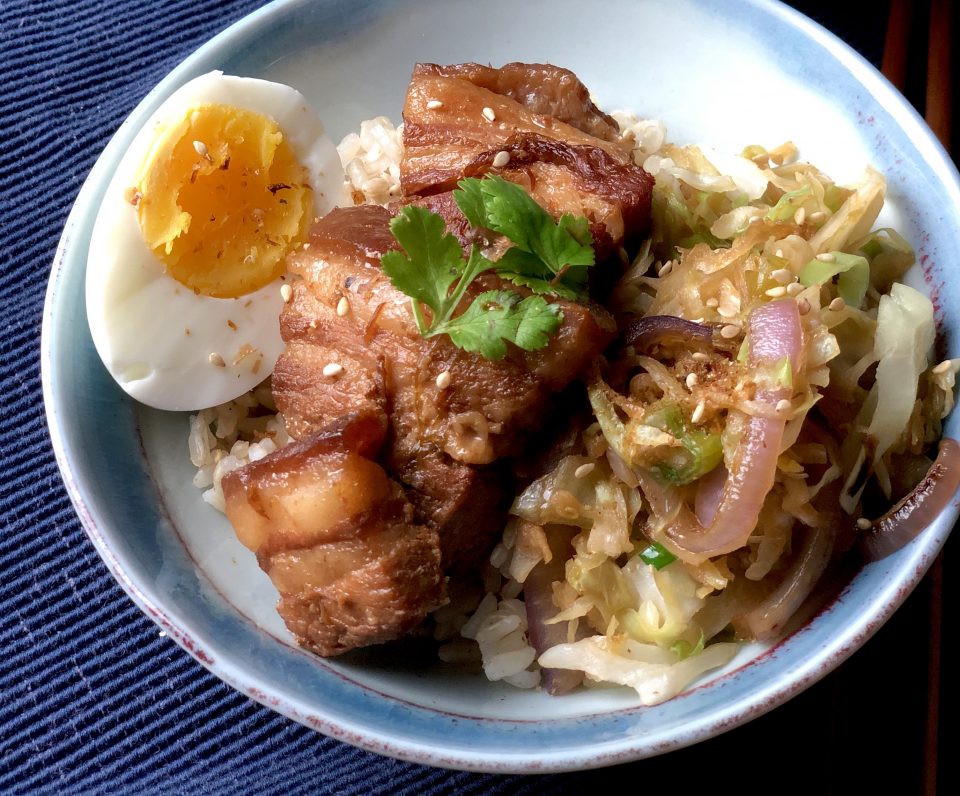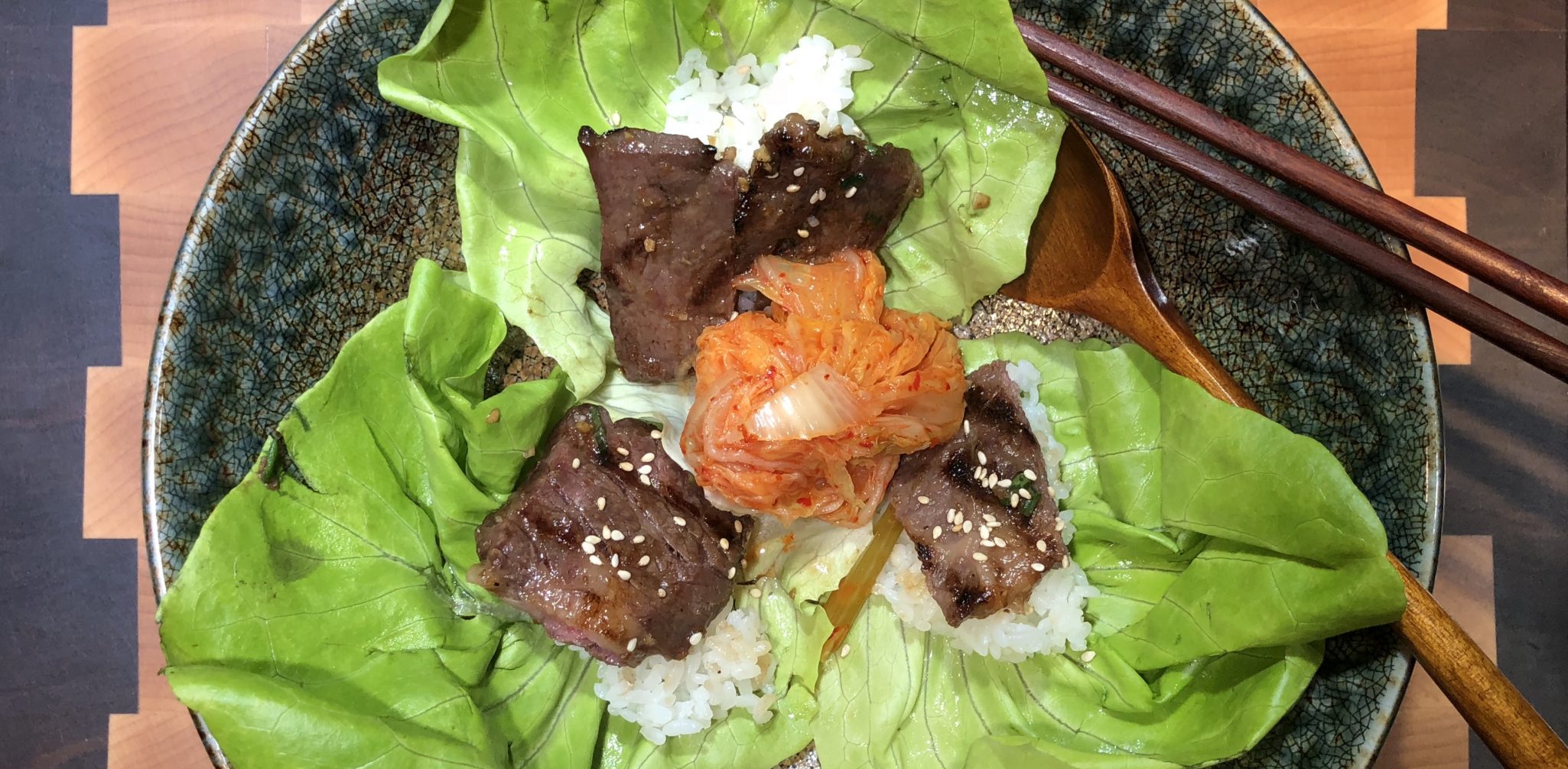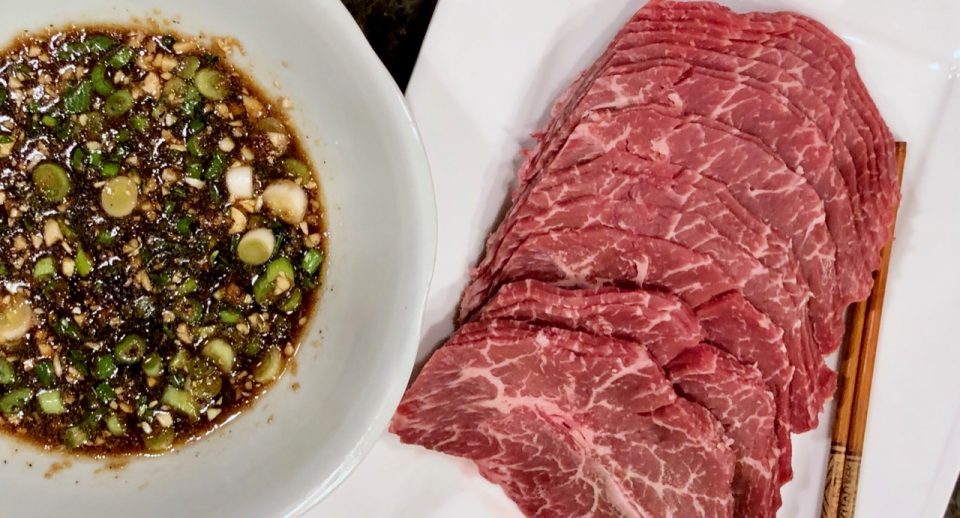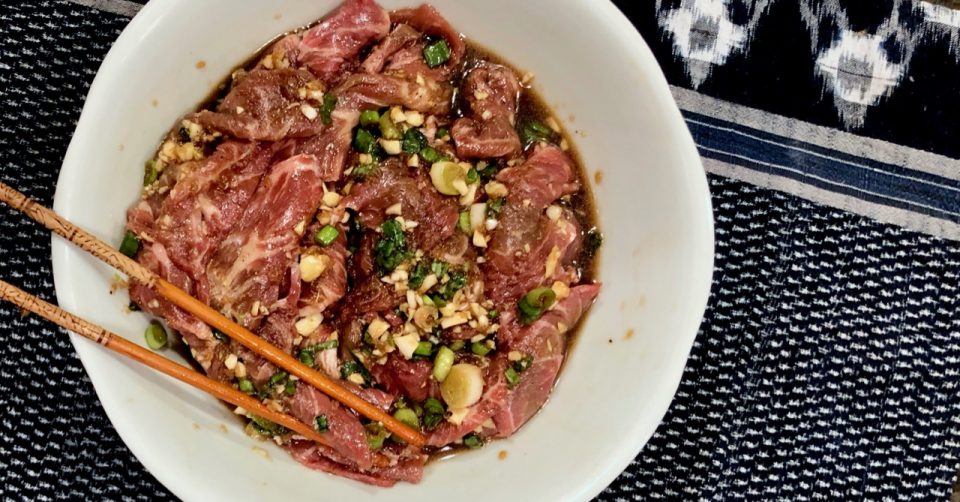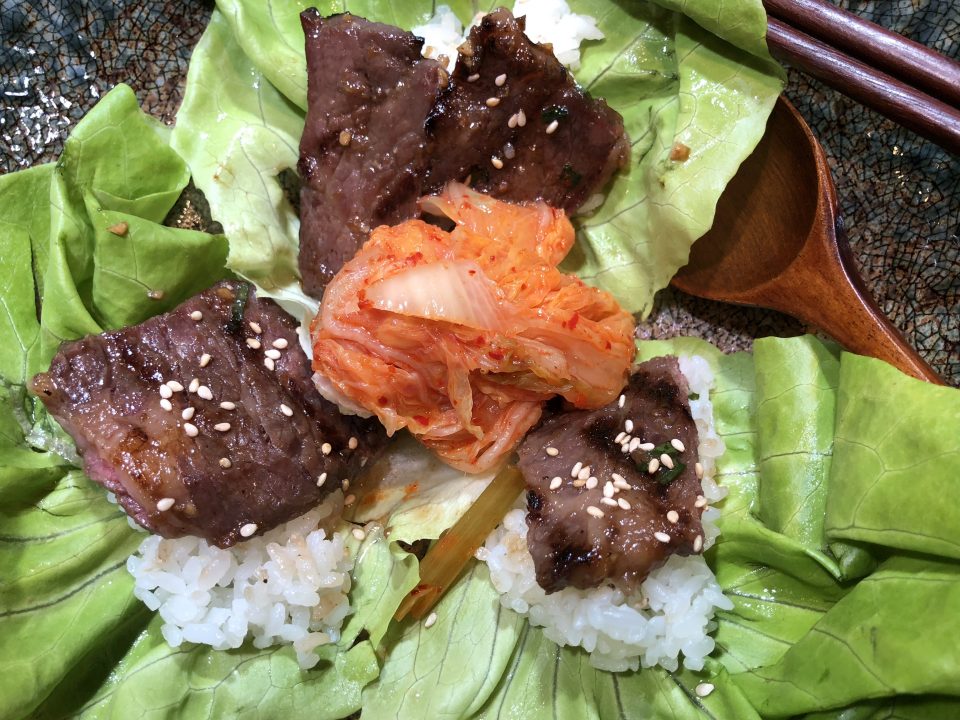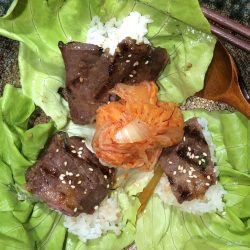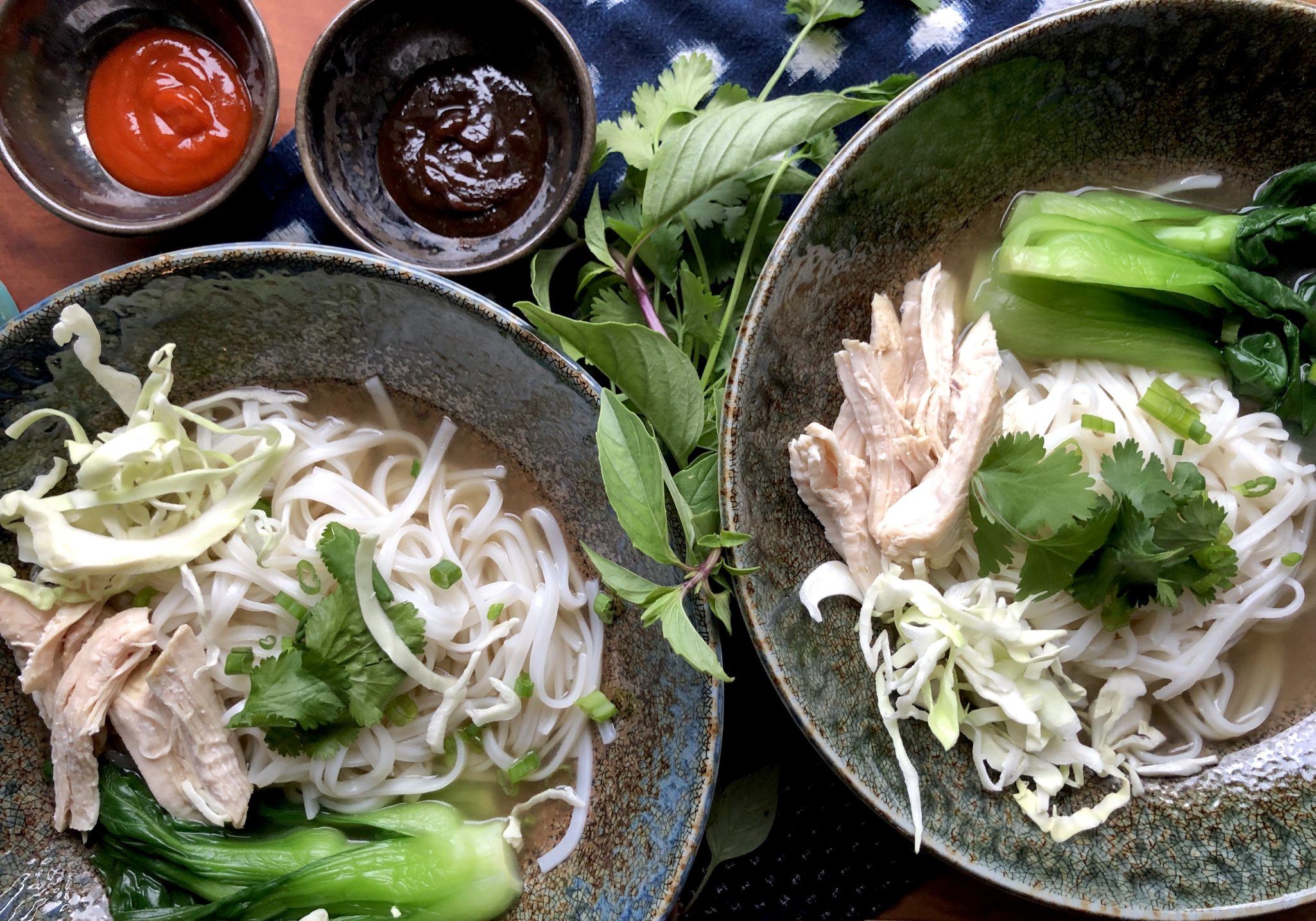
Two Pho-One Deal (Pho Ga Noodle Soup & Chicken Noodle Salad)
Last week I posted a teaser on Instagram and FB of a really quick version of Pho Ga, Vietnamese chicken rice noodle soup. “In less than an hour, you will be sitting down to a steaming hot, delicious bowl of noodles. Recipe post tonight!”
Sorry, stuff happens and I am a procrastinator by nature. Tonight is NOW, finally (my humble opinion, worth the wait).
I found the recipe for the quick and easy Pho in the Los Angeles Times. I LOVE that paper. When I lived in LA I religiously read the Wednesday Food Section (sometimes the front page but never the sports page-my dislike for the Dodgers never waned). Some of my favorite recipes and stalwarts in my repertoire are from the LA Times. I’m adding not only this Pho Ga Soup but a little gem that was tagged onto the end, a delicious chicken noodle salad, Phở Gà Trộn, made from the same ingredients, soooo good. I almost like it more than the Pho Ga. You can find the recipe and notes for Pho Ga Tron HERE. Both recipes are from Andrea Nguyen, Asian cookbook author extraordinaire.
Back to the Pho Ga. Aside from going out to your favorite hole in the wall for pho, making pho at home is a weekend project. Making it after a long commute, on a weekday, ridiculous! But a couple of shortcuts and whaddya know…nothing better than a delicious bowl of noodles after a horrendous commute.
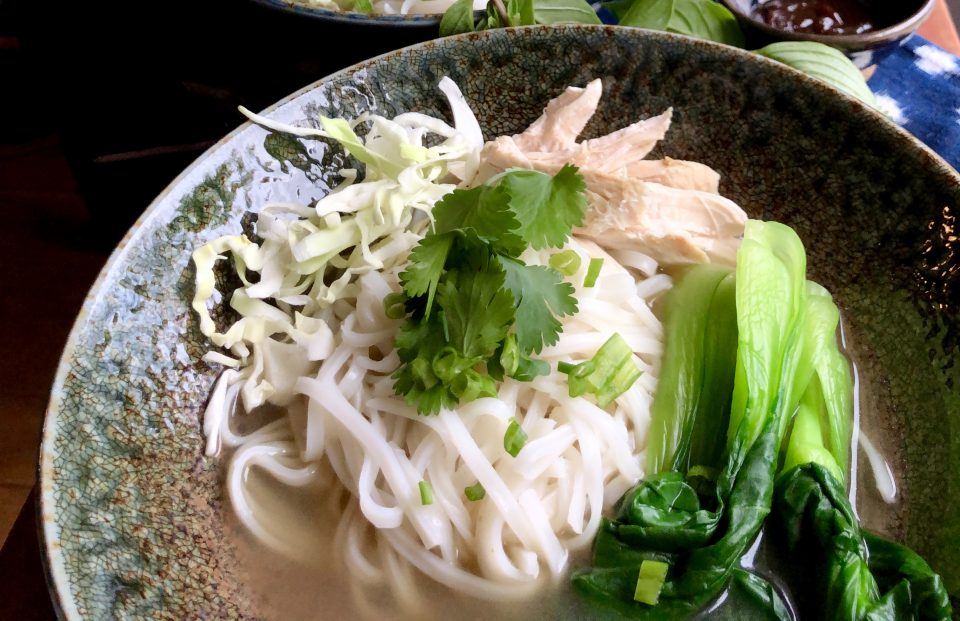
Shhhh…The secret is to start with pre-made broth. If you have homemade-grrrrreat, if not, low sodium canned or boxed broth works well. Toasted coriander seeds, green onions, and ginger are added to the broth along with chicken, cilantro stems and salt. While the broth simmers for about 20 minutes, prep your noodles and garnishes. Boom, you have just doctored stock into a perfectly respectable, delicious, chicken soup for pho. For garnishes, I usually have cilantro, mint, green onions or Thai basil and limes on the table. Don’t forget to put out the Siracha and Hoisin Sauce!
Quick Chicken Pho (phở gà nhanh)
Ingredients
- 3⁄4 inch piece ginger
- 2 medium-large green onions
- 1 bunch cilantro sprigs
- 1 1⁄2 teaspoons coriander seeds
- 1 whole clove
- 3 1⁄2 to 4 cups low-sodium chicken broth
- 2 cups water
- 2 6- to 8-ounce boneless, skinless chicken breast or thigh reserve one for noodle salad
- 1⁄2 teaspoon fine sea salt
- 5 ounces dried narrow flat rice noodles such as banh pho, rice stick or pad Thai noodles
- 2 to 3 teaspoons fish sauce
- 1⁄2 teaspoon organic sugar or 1 teaspoon maple syrup (optional)
- Pepper optional
- 1/4 thinly sliced red onion optional for broth
- 2-3 dried shiitake mushrooms optional for broth
Garnishes
- sliced green onions
- chopped cilantro
- Thai basil leaves leave on stem
- fresh mint leave on stem
- bean sprouts
- lime wedges
Instructions
- Peel then slice the ginger into 4 or 5 coins. Smack with the flat side of a knife or meat mallet and set aside. Thinly slice the green parts of the green onion to yield 2 to 3 tablespoons, and set aside to use as a garnish. Cut the leftover sections into 2- to 3-inch lengths, bruise, then add to the ginger.
- Coarsely chop the leafy tops of the cilantro to yield 2 tablespoons; set aside to use as a garnish. Set the remaining cilantro sprigs aside.
- In a 3- to 4-quart pot, toast the coriander seeds and clove over medium heat until fragrant, 1 to 2 minutes. Add the ginger and bruised green onion sections. Stir until aromatic, about 30 seconds.
- Remove the pot from heat for about 15 seconds to briefly cool, then pour in the broth. Add the water, cilantro sprigs, chicken, and salt. (optional, add mushrooms and red onions) Bring to a boil over high heat, then immediately then lower the heat to gently simmer for 20-25 minutes.
- While the broth simmers, soak the rice noodles in hot water until pliable and opaque. Drain, rinse, and set aside. Test your noodles, they should be soft and pliable but still have a slight bite.
- After 10-12 minutes of simmering, the chicken should be firm and cooked through (press on it and it should slightly yield). Transfer the chicken to a bowl, flush with cold water to stop the cooking, then drain. Set the chicken aside until cool enough to handle, then shred into bite-size pieces. You will only need 1 chicken breast for the soup. Reserve second one for noodle salad. If you don't plan on making the salad, use only 1 piece of chicken.
- When the broth is done simmering, strain it through a fine-mesh strainer into a medium pot. Discard the solids. You should have about 4 cups broth. Season with fish sauce and sugar, if needed, to create a strong savory-sweet note. If using red onion you may not need sugar.
- Bring the strained broth to a boil over high heat. Put the noodles in a noodle strainer or mesh sieve and dunk in the hot broth to heat and soften, 5 to 60 seconds. Lift the noodles from the pot and divide between the 2 bowls.
- Reduce the heat to keep the broth hot while you arrange the chicken on top of the noodles and garnish with the chopped green onion, cilantro, and a sprinkling of pepper. Taste for seasoning. Return the broth to a boil and ladle into the bowls.
- Extra broth can be refrigerated or frozen. You will need 1/2 cup of broth for the noodle salad.
Notes
